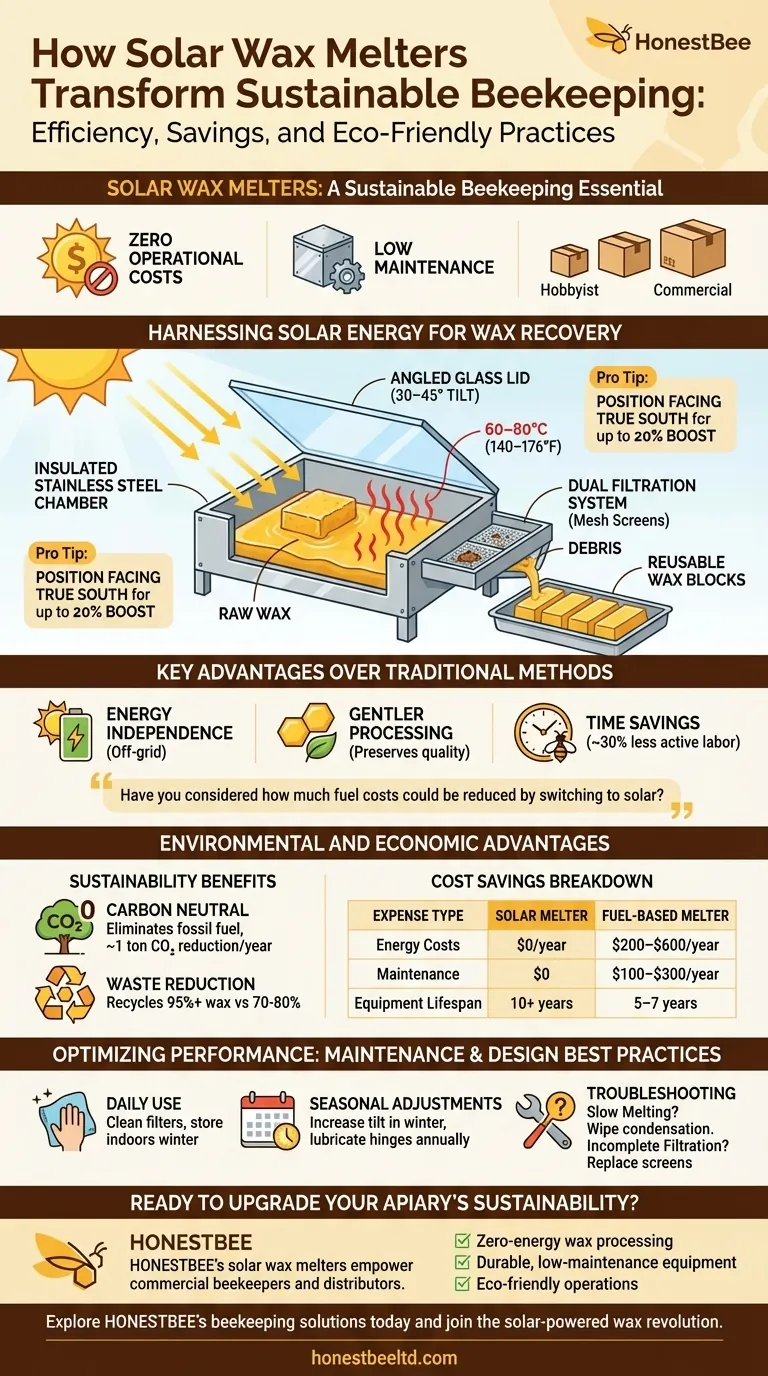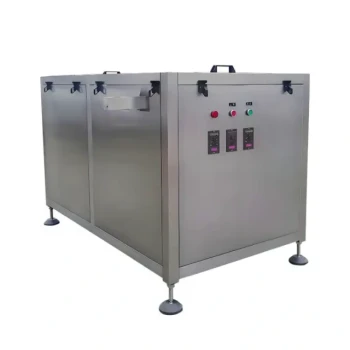Beekeepers seeking sustainable wax processing solutions are increasingly turning to solar wax melters—devices that harness sunlight to purify beeswax without fuel or electricity. This article explores why these systems outperform traditional methods, delivering environmental benefits, cost savings, and operational simplicity for commercial apiaries and small-scale beekeepers alike.
Solar Wax Melters: A Sustainable Beekeeping Essential
Solar wax melters are revolutionizing wax recovery by replacing energy-intensive methods with clean solar power. Unlike fuel-based melters that require constant monitoring, these devices automate wax purification using passive solar heat, making them ideal for eco-conscious beekeepers.
Why Beekeepers Choose Solar Melters:
- Zero operational costs: No need for gas, electricity, or fuel purchases
- Low maintenance: Stainless steel construction resists corrosion and simplifies cleaning
- Scalability: Available in sizes from hobbyist to commercial-scale units
Harnessing Solar Energy for Wax Recovery
Solar melters use a simple yet effective design: sunlight passes through a transparent lid, heating an insulated chamber to melt wax at temperatures around 60–80°C (140–176°F). The liquefied wax filters through screens, leaving debris behind, and solidifies into reusable blocks.
Key Advantages Over Traditional Methods:
- Energy Independence: Operates entirely off-grid, ideal for remote apiaries
- Gentler Processing: Solar heat preserves wax quality better than open-flame methods
- Time Savings: Requires ~30% less active labor compared to stove-top melting
"Have you considered how much fuel costs could be reduced by switching to solar?"
Key Components and Their Roles in Maximizing Efficiency
A well-designed solar melter combines:
- Insulated Stainless Steel Chamber: Retains heat efficiently and withstands outdoor conditions
- Angled Glass Lid: Optimizes sunlight capture (typically tilted at 30–45 degrees)
- Dual Filtration System: Mesh screens separate impurities without clogging
Pro Tip: Positioning the melter facing true south (northern hemisphere) boosts daily output by up to 20%.
Environmental and Economic Advantages Over Fuel-Based Melters
Sustainability Benefits:
- Carbon Neutral: Eliminates fossil fuel use, reducing a typical apiary’s CO₂ emissions by ~1 ton annually
- Waste Reduction: Recycles 95%+ of raw wax versus 70–80% with manual scraping
Cost Savings Breakdown:
| Expense Type | Solar Melter | Fuel-Based Melter |
|---|---|---|
| Energy Costs | $0/year | $200–$600/year |
| Maintenance | $100–$300/year | |
| Equipment Lifespan | 10+ years | 5–7 years |
Optimizing Performance: Maintenance and Design Best Practices
-
Daily Use:
- Clean filters after each batch to prevent clogging
- Store indoors during winter to prolong glass lid lifespan
-
Seasonal Adjustments:
- Increase tilt angle in winter for lower sun angles
- Apply food-grade lubricant to hinges annually
-
Troubleshooting:
- Slow Melting? Check for lid condensation (wipe clean to restore transparency)
- Incomplete Filtration? Replace mesh screens every 2–3 seasons
Ready to Upgrade Your Apiary’s Sustainability?
HONESTBEE’s solar wax melters empower commercial beekeepers and distributors to cut costs and environmental impact simultaneously. By choosing our stainless steel, high-efficiency melters, you invest in:
✅ Zero-energy wax processing – Save hundreds annually on fuel
✅ Durable, low-maintenance equipment – Built to last a decade or more
✅ Eco-friendly operations – Meet consumer demand for sustainable practices
Explore HONESTBEE’s beekeeping solutions today and join the solar-powered wax revolution.
Visual Guide

Related Products
- Professional Thermostatic Conical Honey Melter
- HONESTBEE 72 Frame Industrial Electric Honey Extractor for Beekeeping
- Professional Frame Preparation: The HONESTBEE Electric Wire Embedder
- Honey Concentrating Vacuum Heating Thickening Machine Dehumidifier for Honey
- High Quality Honey Dehumidifier Dryer Thickening Machine for Beekeeping
Related Articles
- The Professional’s Guide to Honey Refractometer Calibration: Ensuring Quality, Protecting Profit
- How to Prevent and Manage Honey Crystallization in Flow Hives: A Beekeeper’s Guide
- How Honey Heating Tanks Preserve Quality and Efficiency in Modern Beekeeping
- How to Optimize Steam Wax Melting for Higher Yields and Safer Operations
- The Unseen Battle in Every Honey Bucket: Heat, Time, and Quality




















